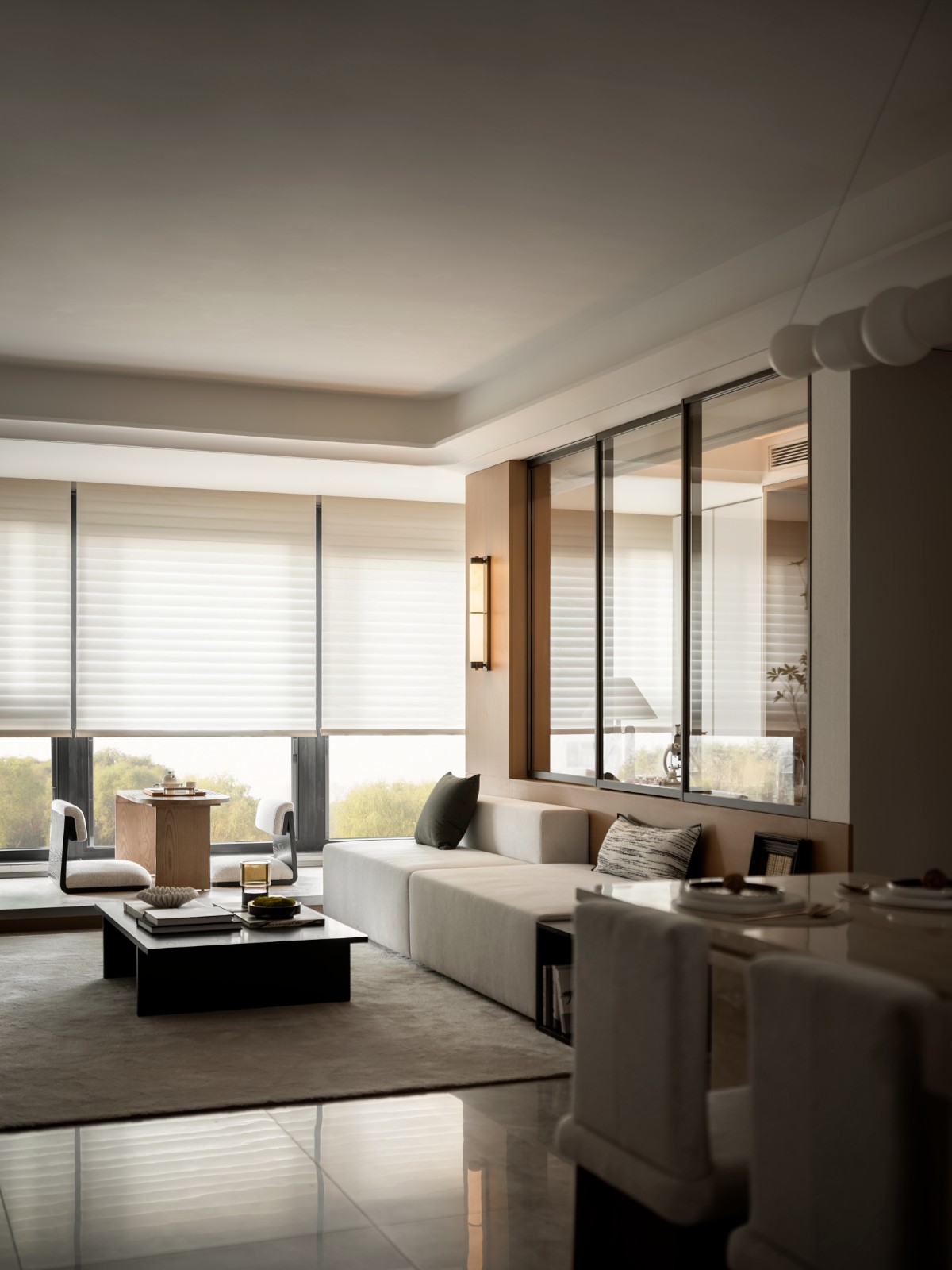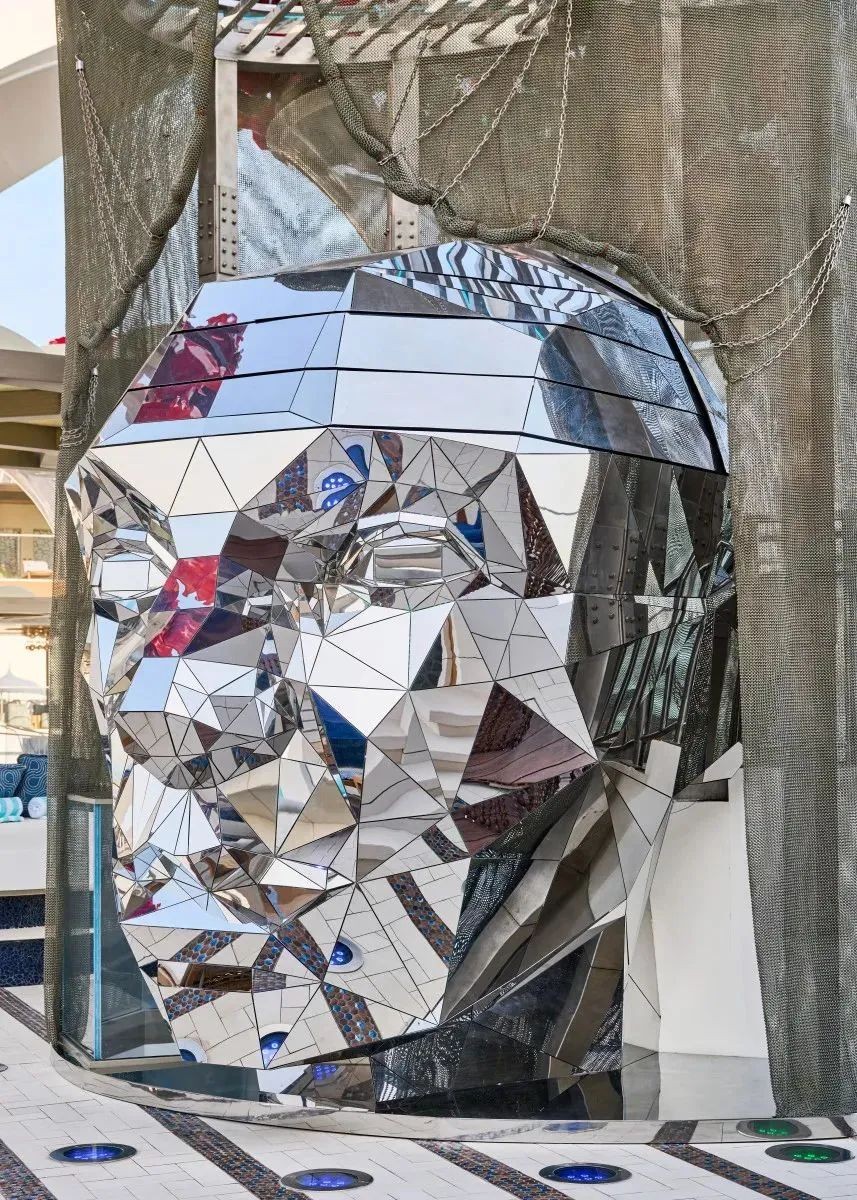Graanmarkt 13 Vincent Van Duysen
2019-10-09 14:36
Since the early 16th century the urban square called ‘Graanmarkt’, located in the historic centre of Antwerp, has been a well-known marketplace where a wide range of fresh and authentic products are sold. Enclosed by a series of noble, classical houses and the beautiful Bourla theatre, this square was the perfect setting for a multifunctional project aiming to reflect the origin of the Graanmarkt by housing a concept store and gallery, a restaurant and a hotel-serviced apartment Graanmarkt 13, with only its neoclassical façade retained, appears to be a home from the outside: with a typical white-painted façade, three floors, coach doors and no merchandised window displays, it evokes nothing more than a period house from the 18th century. The refurbishment of the building retained a homely, quiet atmosphere throughout the whole project. The front façade was well preserved, and the authenticity of the interior was defined through using refined, classical materials. In this way the architectural qualities of the building were respected, while at the same time in the interior, more raw, tactile and sustainable elements such as wood, metal, hammered glass and concrete were introduced. The lighting throughout is entirely custom made and designed in cooperation with PS Lab. The rear façade was radically stripped down, new floor levels were inserted and, most importantly, a grand staircase in exposed concrete created a new vertical connection between floors. The influx of natural light through large windows works with the sensual materiality of the interior spaces to create a calm and open environment. The restaurant in the basement – already one of Antwerp’s most renowned culinary retreats – is a conceptual ‘extension of the marketplace’, where acclaimed chef Seppe Nobels serves courses with herbs and vegetables home-grown on the roof terrace behind. The dining space looks out on to a small courtyard with its lone ginkgo tree soaring towards the floors above. The design aimed to bring the garden square into the space, making it a focal point of the building. This was achieved by placing benches, similar to those outside, green bistro chairs and the flower lamps around the two structural pillars. The resulting space is a dynamic, poetic expression; the architecture remains very contemplative. 自16世纪初以来,位于安特卫普历史中心的名为“Graanmarkt”的城市广场一直是一个著名的市场,在那里出售各种各样的新鲜和正宗的产品。这个广场被一系列高贵、古典的房子和美丽的Bourla剧院所包围,是一个多功能项目的完美环境,目的是通过容纳一个概念商店和画廊、一家餐厅和一套酒店服务的公寓Graanmarkt13,只保留了它的新古典主义立面,似乎是一个从外面的家:一个典型的白色立面,三层楼,马车门,没有商品橱窗展示,它只能唤起一个18世纪的房子。这座建筑的翻修在整个项目中保持了一种朴素、安静的气氛。正面正面得到了很好的保护,内部的真实性是通过使用精致的、经典的材料来定义的。通过这种方式,建筑的建筑品质受到尊重,同时在内部引入了更多的原始、触觉和可持续的元素,如木材、金属、锤打玻璃和混凝土。整个照明完全是定制的,并与PS实验室合作设计。后立面被彻底剥离,新的地板水平被插入,最重要的是,一个大楼梯暴露的混凝土创造了一个新的垂直连接之间的地板。自然光通过大窗户的涌入与室内空间的感官物质性一起创造了一个平静和开放的环境。地下室的餐厅已经是安特卫普最著名的烹饪胜地之一,是市场的概念上的延伸,著名的厨师SeppeNobels在后面的屋顶露台上提供草药和蔬菜的课程。餐厅向外望去,一个小庭院,它的孤零零的银杏树飞向上面的地板。设计的目的是把花园广场带入空间,使它成为建筑的焦点。这是通过在两个结构柱周围放置与外面类似的长凳、绿色小酒馆椅子和花灯来实现的。由此产生的空间是一种动态的、诗意的表达;建筑仍然非常沉思。


On the ground floor there is a concept store for high-end fashion, accessories and furniture. Custom-designed matt-black fixtures contrast with the bone-textured plaster walls. A circular fitting room draped in heavy linen is visible upon entry and this adds another textural layer to the space. The first-floor gallery is used for exhibitions and events. The upper levels feature an apartment – originally a home for the owners, now a luxurious apartment. The open-plan top floor, organized around the fireplace, combines a seating corner, open kitchen and dining area. The living room with a row of panoramic windows looks onto the large terrace with views of treetops and the city. From the rooftop terrace behind, the Graanmarkt marketplace can be seen below. 在一楼有一个概念商店,为高端时尚,配饰和家具.定制设计的马特黑色固定装置与骨质灰泥墙形成对比。一个圆形试衣室,覆盖着厚重的亚麻布,可以看到入口,这增加了另一个纹理层的空间。一楼画廊用于展览和活动.楼上有一套公寓-原来是业主的家,现在是豪华公寓。开放式顶层,组织在壁炉周围,结合一个座位角,开放式厨房和就餐区。客厅有一排排全景窗口,可以俯瞰大露台,可以看到树梢和城市。从后面的屋顶露台上,可以看到下面的Graanmarkt集市。


Visit the official website of Graanmarkt 13 here 在这里访问Graanmarkt13的官方网站




Publications:


Corriere della Sera - Living, June 2015 Corriere della Sera-生活,2015年6月


Interni n°1/2, January - February 2015 Interni编号1/2,2015年1月至2月




Photography:


Koen Van Damme 科恩·范达梅


Frederik Vercruysse 弗雷德里克·维克鲁斯




































